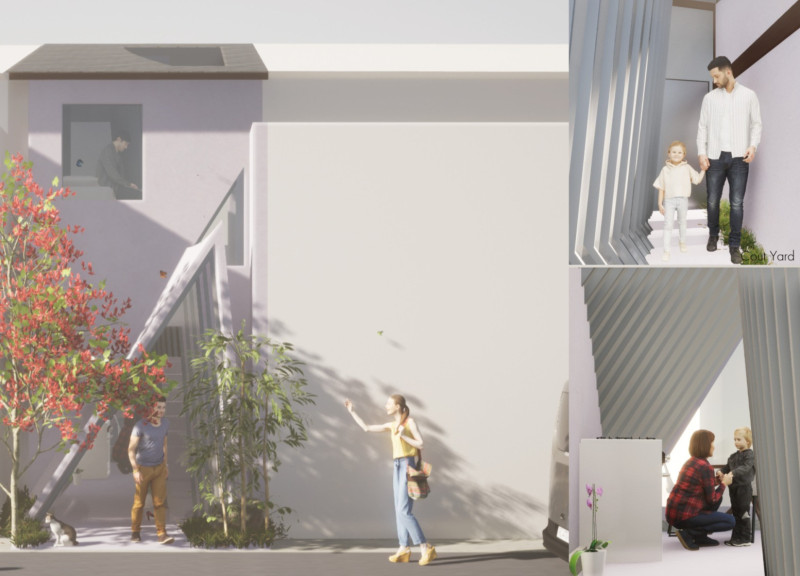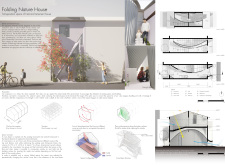5 key facts about this project
At its core, the Folding Nature House embodies a philosophy that prioritizes human connection with the built environment and the natural world. The design reflects a commitment to sustainability and well-being, incorporating elements that allow for optimal interaction with light, air, and greenery. The architecture employs a series of folds and curves to create a dynamic structure that distinguishes itself from the stark rectilinearity often found in urban design. This unique form enhances the aesthetic appeal of the building while simultaneously improving functionality, offering both durability and comfort for its occupants.
The project’s function is multifaceted, encompassing communal areas, private living spaces, and outdoor extensions, which collectively enhance the residents' quality of life. Inside, a central axis organizes various functional spaces that promote both social interaction and individual retreat. The open-plan kitchen and dining area serve as the heart of the home, designed for gatherings and fostering a sense of togetherness. Private quarters are intentionally separated from communal spaces, allowing for moments of solitude and the ability to retreat from the busyness of everyday life.
Significant to the design is the use of materials that resonate with local traditions and contemporary practices. The primary materials include wood, which is employed for structural and aesthetic purposes, providing warmth and a tactile experience within the interiors. Extensive glass panels are utilized to invite natural light and promote views of the surrounding environment, enhancing the residents' connection to nature. Concrete is strategically used for foundational support, ensuring stability in a dense urban setting, while metal features incorporate durability and support the innovative forms of the architecture.
One of the key aspects that sets the Folding Nature House apart is its careful integration of green spaces. Balconies and gardens extend the living area outdoors, creating a seamless transition between inside and outside spaces. This not only maximizes the usable area but also introduces the natural elements that are often scarce in urban environments. The landscaping is designed to foster a vibrant ecosystem, encouraging biodiversity and enhancing the overall well-being of the residents.
Another noteworthy design approach is the project's emphasis on adaptability. The flexibility of the layout allows residents to customize their living spaces according to their individual needs. This adaptability is complemented by shared facilities that promote communal living while respecting personal privacy. By designing spaces that can evolve over time, the Folding Nature House addresses the changing dynamics of urban life.
Through its innovative design and thoughtful use of materials, the Folding Nature House highlights important architectural ideas that can influence future urban developments. The project exemplifies the potential for residential architecture to be both functional and harmonious with nature, making it a model for sustainable living in the city.
For those interested in deeper insights into this project, additional details such as architectural plans, architectural sections, and other architectural designs can provide a more comprehensive understanding of the concepts and execution behind the Folding Nature House. Exploring these elements will reveal the intricacies of this project and its approach to creating meaningful living environments within urban contexts.























